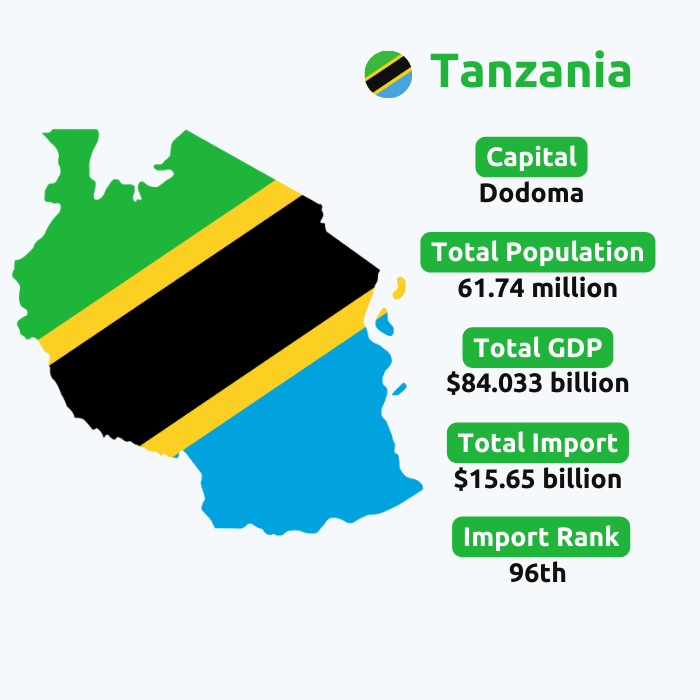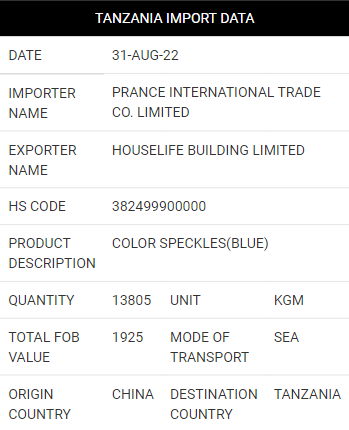Sample Data
Understanding Tanzania Import Data
We obtain trustworthy data from organizations, shipping businesses, and customs ports. This Trade Data
contains a wide range of fields, such as HS codes, product descriptions, prices, quantities, origin country,
destination country, and port names together with currency values. For traders and marketers, this trade data is
crucial information that helps them to make informed decisions. From the HS codes and product descriptions to
the quantity and cost of each product, everything can be obtained through this trade data.
We have included a sample of this trade data for your convenience and greater understanding so
that you can see what the trade data looks like as a whole, with complete details.
Import data provides critical insights into the goods and services brought into the country from overseas. It encompasses various aspects, including the value of imports, the countries of origin, the commodities imported, and any tariffs imposed. Tanzania's import data plays a pivotal role in economic analysis, policymaking, and business decision-making. It offers a wealth of information to policymakers, traders, and investors, helping them understand market trends, identify potential opportunities, and devise effective strategies to navigate the import landscape. According to Tanzania's customs data, Tanzania imported goods worth a total of $13.8 billion in 2023. We offer you really helpful and educational information about Tanzanian import and trade data. All of the information in our database is derived from recently updated shipping bills, invoices, and other crucial transaction documents. We obtain trustworthy data from Tanzanian customs ports, organizations, and other shipping firms. Tanzanian trade data contains a wide range of fields, such as HS codes, product descriptions, quantities and prices, port names, and currency values.
So, as you can see, we obtain trustworthy data from organizations, shipping businesses, and customs ports. The trade data contains a wide range of fields, such as HS codes, product descriptions, prices, quantities, origin country, importers/exporters names and addresses, destination country, and port names together with currency values. For traders and marketers, this trade data is crucial information that helps them make informed decisions. From the HS codes and product descriptions to the quantity and cost of each product, everything can be obtained through this trade data. We have included a sample of the trade data for your convenience and greater understanding so that you can see what the trade data looks like as a whole, with complete details.





